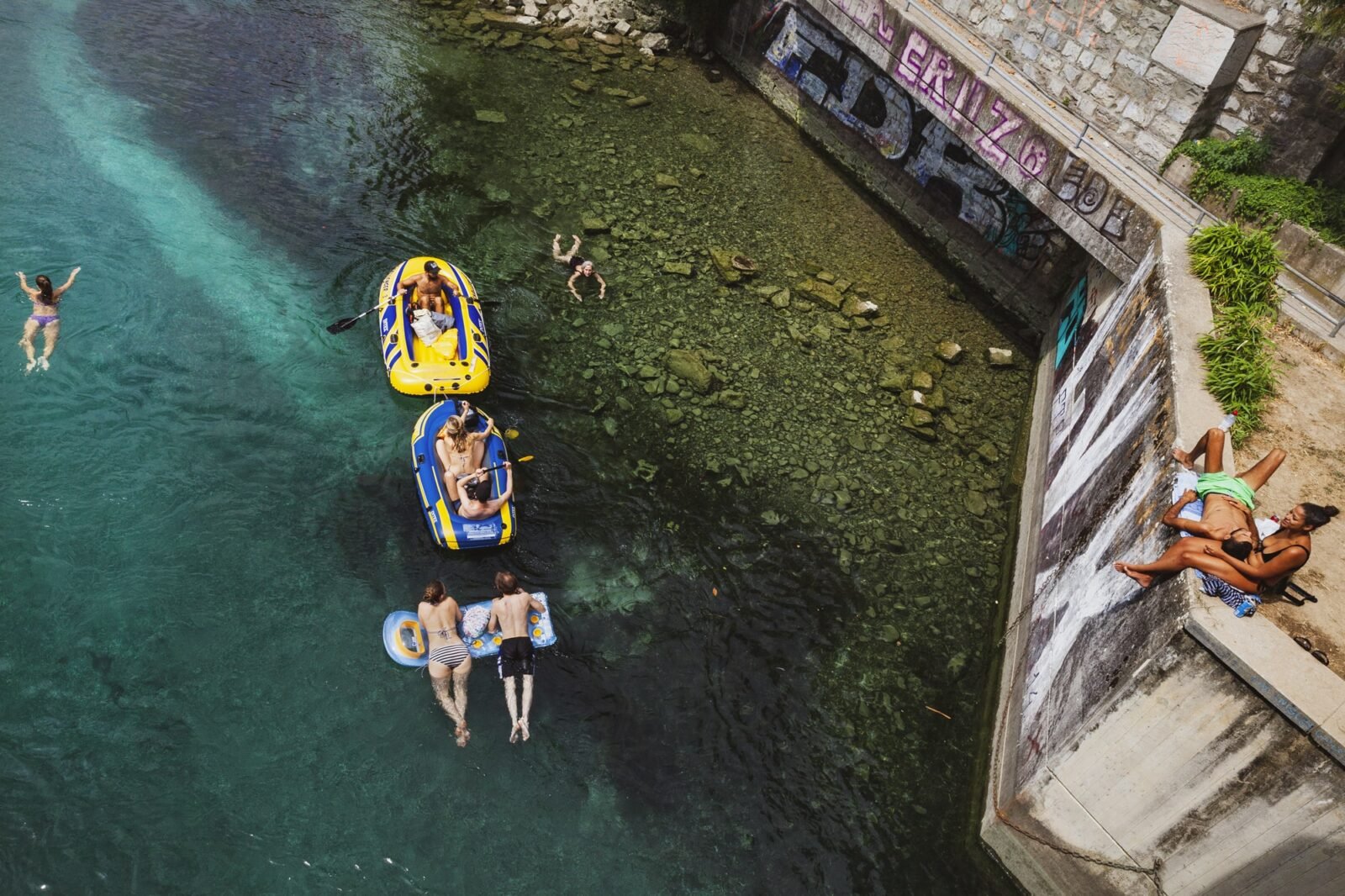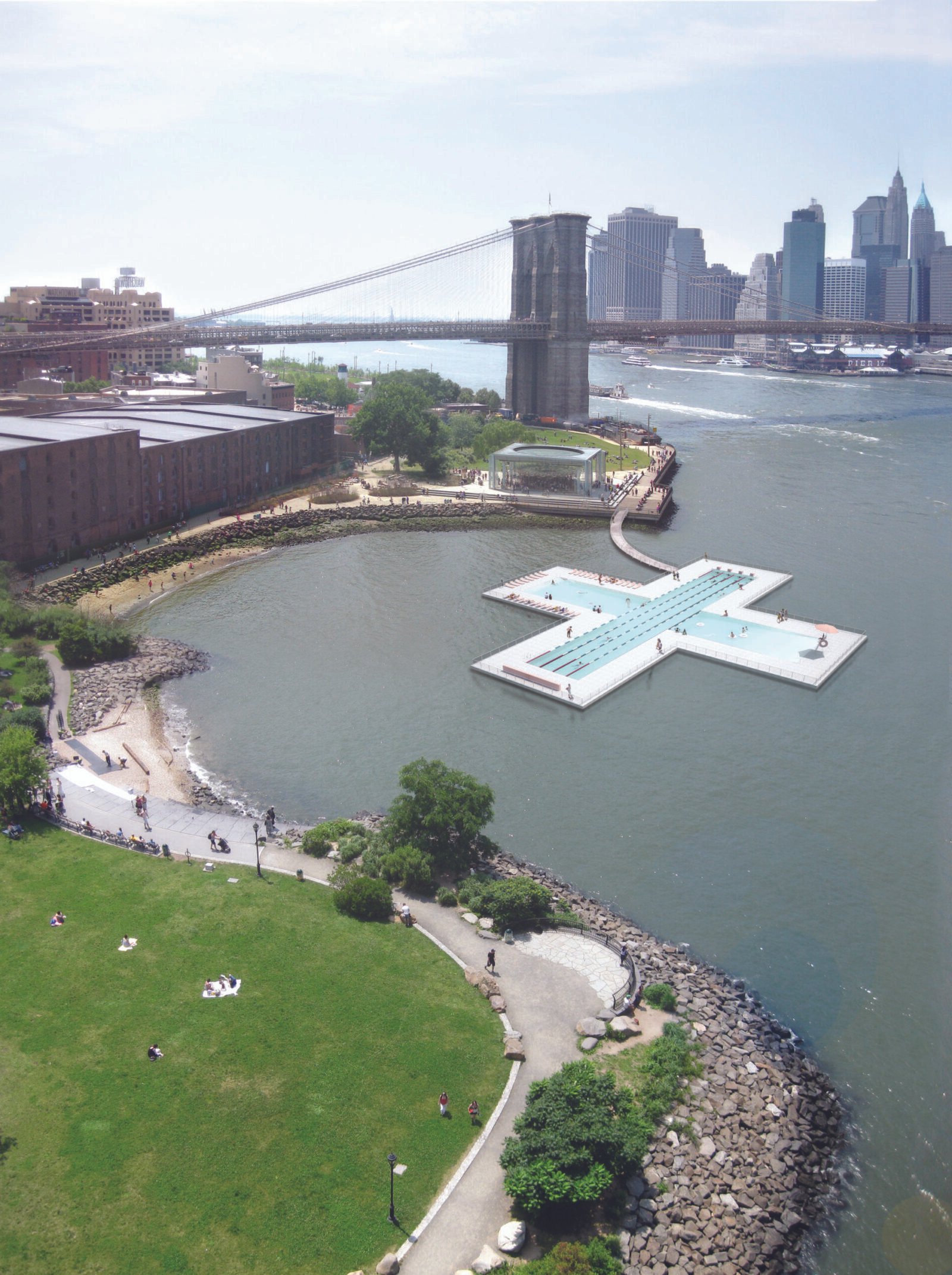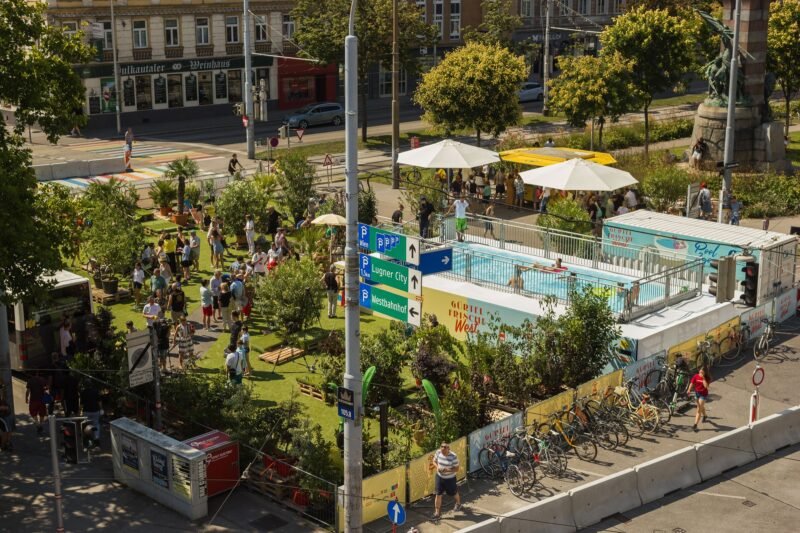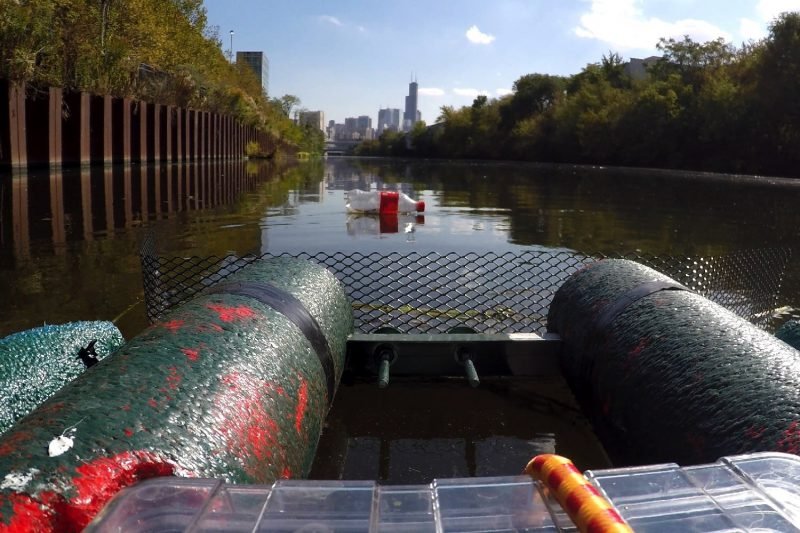The Renaissance of Urban Swimming

The urban swimming movement is gaining popularity. Around the world, initiatives are emerging to make urban waterways swimmable. We have listed a few.
It is hard for some people to conceive the possibility of swimming in their city’s open waters; many would understandably turn their nose up at the idea, considering the current state of many urban waterways. But the urban swimming renaissance movement is starting to gain traction. Initiatives are popping up across the world to reclaim urban waterways for swimming. People are starting to take an interest, to become inspired by existing projects, and to conceive that open-air swimming in their city really could be a possibility.

In the last few decades, Swiss cities have become pioneers of the urban swimming movement, making their rivers available as natural public spaces within the built environment. In Switzerland today it is common to see workers taking a dip in their lunch break, or even swimming their way to work in the morning, whilst the rest of the world looks on in awe.
Andreas Ruby, co-curator of the Swim City exhibition that first appeared at the Swiss Architecture Museum in Basel, sees urban swimming as a way to reclaim the right to the city: “This is about public space. It’s about the sensation that we can appropriate something that is apparently anonymous, that belongs to everybody and nobody.” Switzerland’s public open waterways have come to constitute an accessible public space that improves the quality of life for the city’s residents. The Swim City exhibition, and book by the same title, showcases urban swimming initiatives from across the world and is currently held at the Museum of Architecture and Design Ljubljana (MAO).

There are two main issues to contend with when making city water swimmable: firstly, water needs to be adequately clean so that it does not pose a health risk; and secondly, measures need to be put in place to ensure that urban swimming is not dangerous in other ways. Swiss rivers were not always clean enough for swimming, but rather this cleaning was achieved by the sustained effort of local governments and citizen campaigns. In terms of health and safety, residents take on the risk themselves, and there are initiatives to train citizen ‘lifeguards’. Andreas Ruby encourages us to demand adequate and accessible swimming water from our local governments, along with the measures to ensure public health and safety. The Swiss example of ‘best practice’ can provide inspiration and momentum for a global movement of reclaiming urban waters as open and accessible public spaces.

Cleaning a whole river system is ambitious, not impossible, but very ambitious. The New York initiative +POOL have decided to tackle river cleaning piece by piece, and have campaigned to get people back swimming in the river since 2010. Their giant plus-shaped pool acts like a giant strainer, cleaning more than 600,000 gallons of water each day. The filter removes bacteria, contaminants and odours without chlorine or other chemicals and leaves safe, swimmable river water for New Yorkers to bathe in. The creators of +POOL think it’s weird that the island of Manhattan is completely surrounded by water, yet the use of this water source is restricted to private boats. The initiative hopes to change the way that New Yorkers see their river, by giving them the opportunity to swim safely in it.

Since the late 1970s, outdoor swimming has been made almost impossible in Brussels — the Belgian capital is the only major city in Europe that has no public outdoor swimming pools. POOL IS COOL believe strongly in the contribution of outdoor swimming to quality of life, and they are determined to change Brussels fate. The initiative strives to revive the culture of outdoor swimming in Brussels. Through research, design and debate POOL IS COOL investigates the possibilities for outdoor swimming in the city.


Every summer, POOL IS COOL creates pop-up pools and swimming interventions across Brussels to inspire the public, and raise awareness of the potential for urban swimming in the city. They see potential in both existing waters and new constructions. POOL IS COOL inspires citizens by showing them a good time and organising playful acts of civil disobedience. For example, whilst it is currently illegal to swim in the canal waters of Brussels, in 2018 POOL IS COOL tested the water quality of the Anderlecht canal. Delighted at its cleanliness, they organised a guerrilla canal jump event which saw many of Brussels residents get involved and dive in.
“Tell the city you want your river back”
+POOL
The overwhelming message which emerges from this movement is persistence. Local governments will often state that it is not possible to clean the rivers and that there is no money to do so, but these initiatives make it possible to imagine a future where we can swim freely through our cities in the open air. They want to drive awareness of this possibility and inspire people to demand access to clean and safe swimming water in cities across the world.



